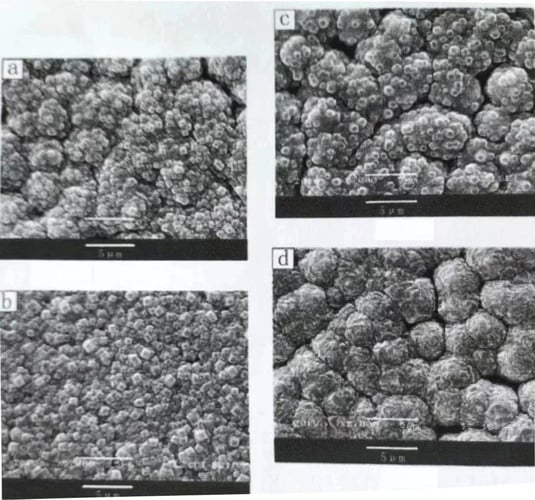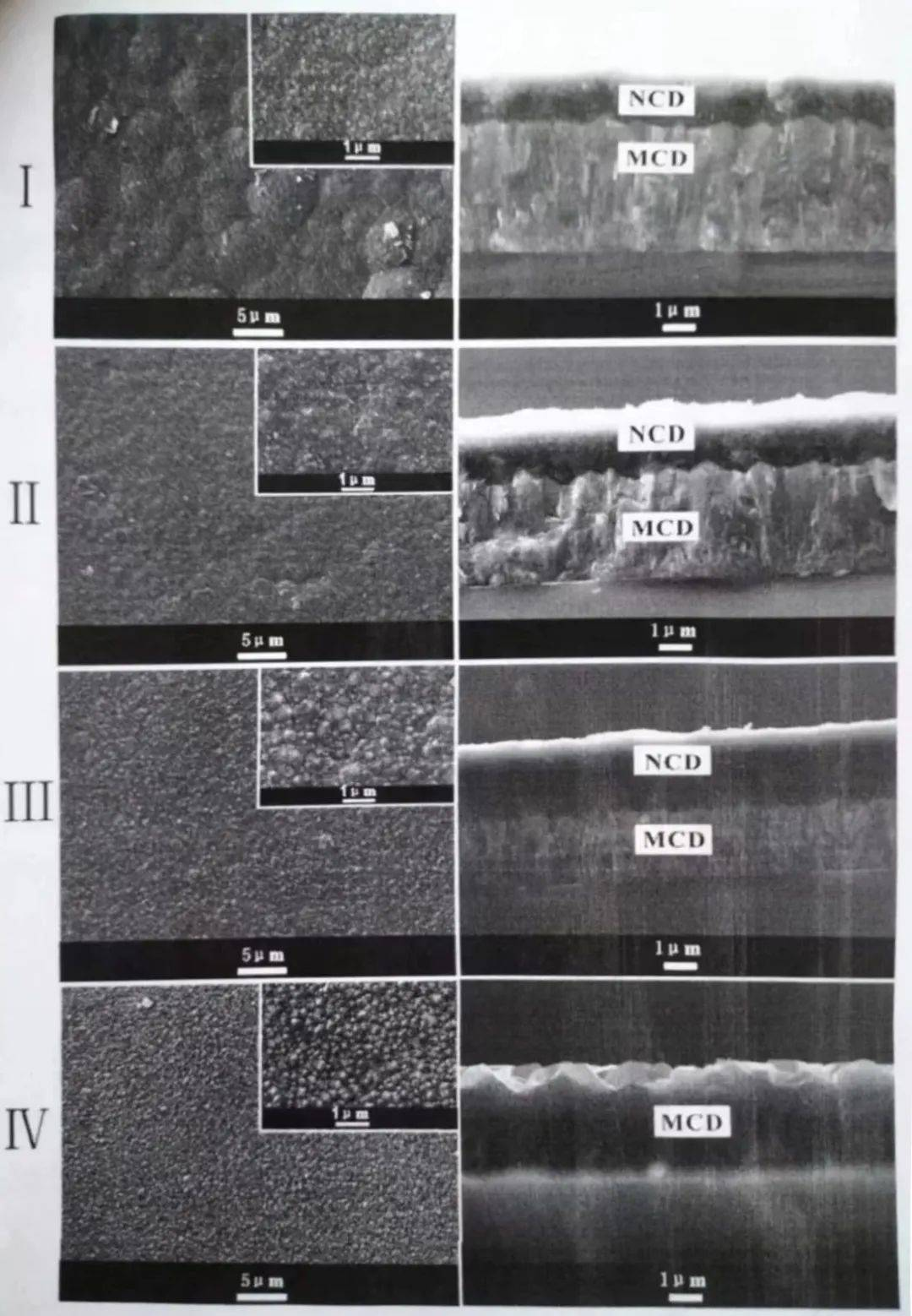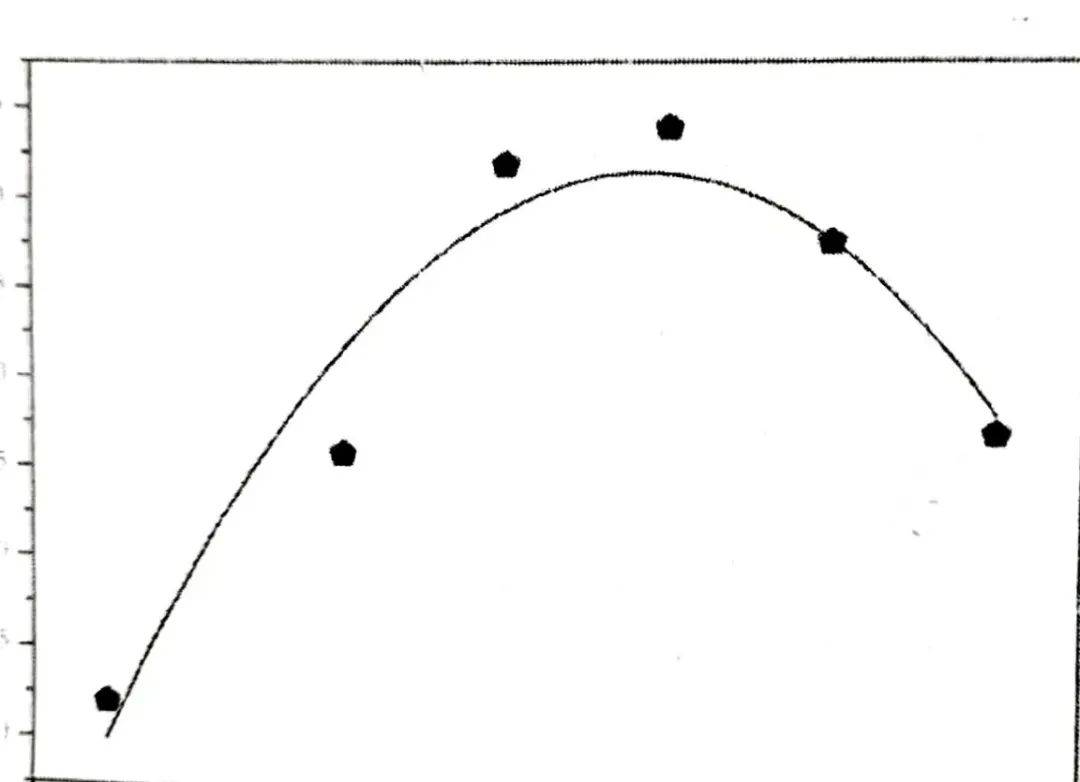The Influence of Auxiliary Gases on the Morphology, Quality, and Growth Rate of Diamond Films

Table of Contents
The introduction of different auxiliary gases (such as O2, CO2, N2, or Ar) has a significant impact on the growth of diamond films. Among these, O2 is the most commonly used auxiliary gas because its introduction can dissociate oxygen species, which can etch the non-diamond phases in the film layer, thereby improving the quality of the diamond film. Additionally, researchers have also attempted to add CO2 as an auxiliary gas, and studies have shown that the addition of CO2 can not only enhance the quality of the film layer but also promote its growth. Other auxiliary gases, such as N2 or Ar, can change the types of plasma species, thus affecting the growth of diamonds. Therefore, the research on the introduction of auxiliary gases is deemed very necessary.
Research indicates that the influence of auxiliary gases on the morphology, quality, and growth rate of diamond films is significant. When methane/hydrogen is used as the sole gas source, the crystal growth orientation is primarily along the (100) plane, with larger voids in the grains and a higher amount of non-diamond carbon phases in the film; the appropriate introduction of oxygen is beneficial for reducing impurities in the diamond film and promoting its growth. The introduction of nitrogen results in the typical "cauliflower" structure during growth, while the introduction of argon yields nano-sized "rice grain" structures. The quality of diamond films tends to decrease with the introduction of nitrogen or argon. Moreover, when nitrogen or argon auxiliary gases are introduced, the deposited diamond films exhibit a micro-nano dual-layer structure. The participation of carbon dioxide in the preparation of high-quality diamond films leads to micro/nano dual-layer diamond films. To obtain high-quality micro/nano dual-layer diamond films with a high growth rate, the concentration of carbon dioxide should not be too low or too high, with a concentration around 25% being optimal.
The Effect of Methane Concentration on the Surface Morphology of Diamond Films
Although the process parameters for diamond growth are closely related to the quality of diamond films, Wang Jianhua believes that the influence of methane concentration is more significant. Furthermore, the methane concentration has a considerable impact on the textured growth of diamond (100) planes. The growth process of diamond films involves the deposition of supersaturated carbon onto the substrate surface. Methane is the main source of supersaturated carbon, and the reaction gas is activated and dissociated by microwave energy into numerous carbon-containing active species, among which the CH3 group has a diamond structure. Its sp3 hybrid orbital is conducive to diamond phase growth. Simultaneously, the presence of CH2 groups in the system, which have sp2 hybrid orbitals, can promote the formation of graphite phases. Under the same conditions, the production rate of graphite phases on the substrate surface is faster than that of diamond phases, directly affecting the deposition quality of diamond films. The activated original hydrogen has a strong etching effect on non-diamond phases, effectively suppressing their formation while retaining diamond phases, thus enabling stable growth of diamonds.
Bi Dongmei et al. (2006), "The Influence of Methane Concentration on Large-Area Diamond Film Growth," Journal of Changchun University, 16(6): 31–33.
Bi Dongmei et al. (2011), "The Influence of Methane Concentration on Optical-Grade Diamond Film Growth," Journal of Changchun University, 21(6): 58–60.
Shi Xinwei et al. (2011), "The Influence of Methane Concentration on the Quality of Diamond Films," Vacuum, 48(6): 64–67.
Cao Juqin et al. (2006), "The Influence of Methane Concentration on the (100) Textured Growth of Diamond Films," Applied Chemistry, 35(10): 745–751.

Figure 1: SEM Images of Diamond Films
The differences in surface morphology in the SEM images can be explained as follows: When the methane concentration is low, although certain specific crystal planes of the grains are clearly visible, the number of carbon-active species that are beneficial for diamond phase growth and are ionized during the reaction is relatively low. This results in a very slow diamond deposition rate, which may even stop. Meanwhile, the concentration of atomic hydrogen is relatively high, enhancing its etching effect on the diamond grains, making it difficult for the diamond grains to grow, resulting in clear grain boundaries. When the methane concentration is appropriately increased, the number of ionized carbon-active species increases, balancing the tendency to combine with atomic hydrogen. At this point, the ionization energy required for the reaction is relatively sufficient, secondary nucleation is reduced, and the deposition rate increases, promoting grain growth and exhibiting specific crystal planes. However, when the methane concentration is too high, the energy required to fully ionize the reaction gas increases. Under the condition that the introduced microwave energy and other reaction gas concentrations remain unchanged, the energy provided is insufficient to fully ionize the mixed gases. Some ionized hydrocarbons repeat the nucleation process on the substrate, making it difficult to form larger diamond grains, thus degrading the quality of the diamond films.
TSAN H C, YONHUA T. "CVD diamond grown by microwave plasma in mixture of acetone/oxygen and acetone/carbon dioxide." Diamond and Related Materials, 1999, 8: 1393–1401.
- The Influence of Argon on the Surface Morphology, Grain Size, and Growth Rate of Diamond Films
Wang Meng et al. used the MPCVD method to deposit diamond films in a traditional CH4/H2 atmosphere, adding auxiliary argon gas to improve the quality of the diamond films. They explored the effects of low-concentration argon on the surface morphology, grain size, and growth rate of diamond films. The surface morphologies of diamond films under different argon flow rates are shown in Figure 2 (a)–(e).

Figure 2: Surface Morphology of Diamond Films at Five Different Argon Gas Volumes
Figure 2 displays the surface morphology of diamond films at five different argon gas volumes. The diamond films exhibit good surface morphology, with well-grown crystal shapes oriented in the (111) direction. Figures 2 (b) to (e) show the diamond surface morphology obtained under progressively increasing argon gas volume fractions. As the argon gas concentration increases, the diamond grains gradually adopt a "pyramidal" growth mode, the secondary nucleation rate rises, and the grain size shows a decreasing trend. The primary reason for this is that the increased volume fraction of argon gas leads to the generation of a large number of Ar+ ions through ionization, which increases the plasma energy density within the reaction chamber. The CH and C2 groups in the CH4/H2 reaction atmosphere also increase. The electron collision ionization cross-section of CH groups is small, requiring a larger amount of energy for excitation, resulting in a significant growth rate. Therefore, as the argon gas volume fraction increases, the relative ratio of C2 groups to CH groups increases, leading to a gradual rise in the nucleation rate of diamonds and a gradual decrease in grain size, thus reducing the surface roughness of the films.
- Research on the Growth of Nano-Dual-Layer Diamond Films with the Participation of Carbon Dioxide Gas
3.1. The Effect of CO2 Concentration on the Surface Morphology of Micro/Nano Diamond Films
Figure 3 shows the SEM surface morphology images and corresponding cross-sectional SEM images of micro/nano dual-layer diamond films at different CO2 concentrations: (I) CO2 concentration of 0.0%, (II) CO2 concentration of 0.8%, (III) CO2 concentration of 2.5%, (IV) CO2 concentration of 4.0%. In Figure 5, it is clear that samples I and III both exhibit micro/nano diamond structures. However, the aggregation of the nano-layer surface is reduced, and the surface becomes more compact and smooth, primarily due to the etching effect of the oxygen species. However, with further increases in CO2 concentration, we find that the aggregation on the surface of sample IV disappears, the grain size increases significantly, and in the cross-sectional image, only one layer of micro-structure is visible, as shown in Figure 3 (IV). The above experiments indicate that during the growth process of nano-diamonds, when the CO2 concentration is set to 2.5%, the nano-layer structure is smoother and finer. If the CO2 concentration is further increased, only micron-sized diamond films can be deposited.

Figure 3: SEM Surface Morphology of Nano-Dual-Layer Diamond Films at Different CO2 Concentrations
3.2 The Effect of CO2 Concentration on the Quality and Structure of Micro/Nano Diamond Films

Figure 4: Raman Spectra of Micro/Nano Dual-Layer Diamond Films at Different CO2 Concentrations
Figure 4 shows the Raman spectra of micro/nano dual-layer diamond films at different CO2 concentrations: (a) CO2 concentration of 0.00%, (b) CO2 concentration of 0.8%, (c) CO2 concentration of 2.5%, (d) CO2 concentration of 4.0%. From Figure 4(a), it can be seen that when the CO2 concentration is 0.0%, there are three distinct Raman scattering peaks located at 1140 cm⁻¹, 1332 cm⁻¹, and 1450 cm⁻¹. The peak at 1140 cm⁻¹ appears as a result of the reduction of grain size to the nanoscale. Additionally, the intensity of the diamond characteristic peak at 1332 cm⁻¹ is weaker, while the intensity of the amorphous carbon characteristic peak at 1450 cm⁻¹ is higher, indicating that the diamond phase content in the nano film layer is low, while the non-diamond phase content is high. When we increase the CO2 concentration from 0.8% to 2.5%, Figures 4(b) and (c) show that the diamond characteristic peak gradually sharpens.
Figure 4 displays the SEM surface morphology images of the four samples. When the CO2 concentration is zero, it can be observed from Figure 5(I) that the surface of the nano-layer exhibits a typical cauliflower-like structure, which aligns with the conclusions drawn by Tang Weizhong et al., who believe that these structures are formed by the aggregation of numerous particles in the tens of nanometers range. Furthermore, the full width at half maximum (FWHM) becomes smaller, indicating that the grains in the film layer are gradually increasing in size, and the diamond phase is increasing. At the same time, the intensity of the sp² characteristic peak at 1560 cm⁻¹ gradually decreases, suggesting that impurities like sp² carbon are reducing, primarily due to the etching effect of oxygen. When the CO2 concentration is 4.0%, as shown in Figure 4(d), the Raman scattering peak at 1140 cm⁻¹ disappears, while the diamond characteristic peak at 1332 cm⁻¹ is strong, indicating an improvement in film quality.
- The Influence of Different O2 Concentrations
Figure 5: Variation of Diamond Film Growth Rate at Different O2 Concentrations
From the graph, it can be seen that the diamond film deposition rate without O2 is approximately 2.0 µm/h, whereas when a trace amount of CO2 is added, its growth rate nearly doubles. This demonstrates the significant impact of O2 on the deposition rate of diamond films. Literature generally suggests that the reason for the acceleration of diamond film deposition rate with the addition of O2 is mainly related to the OH groups generated, which not only facilitate the decomposition of methane but also help to remove impurities such as graphite. Both of these factors greatly assist in diamond growth, thus enhancing the deposition rate of diamond films. Furthermore, the curves shown in the graph are based on polynomial fitting of the growth rate variation trend at each point. It is evident that as the O2 concentration increases, the diamond film deposition rate exhibits a trend of first increasing and then slowing down, with a maximum value around 0.7%. When the O2 concentration exceeds this range, the deposition rate of diamond films decreases instead of increasing. Regarding the cause of this change, some research conclusions suggest that the presence of oxygen in CVD diamond film growth has a function similar to hydrogen, which selectively etches non-diamond carbon. Moreover, the etching ability of O2 is stronger than that of H. Therefore, with excessive O2 addition, the role of O2, in addition to etching non-diamond carbon, also etches the diamond phase. Under these conditions, the growth of diamond gradually shows signs of suppression, resulting in a gradual decrease in growth rate.

Figure 5: Variation of Diamond Film Growth Rate at Different O2 Concentrations
SEM tests were performed on diamond film samples prepared under different O2 concentrations, and the results are shown in Figure 6.

Figure 6: SEM Images of Diamond Films Prepared at Different O2 Concentrations
Based on the SEM images of each group of samples, there are significant differences in the surface morphology of diamond films at different O2 concentrations. Figure 6(a) shows the surface morphology of diamond films prepared without adding O2, where the diamond grain size is relatively uniform, approximately 2.5 µm. However, there is a clear presence of secondary nucleation, which includes some fine grains. After adding a trace amount of O2, changes appear on the surface of the diamond film. Figure 4-9(b) shows the diamond surface morphology when 0.3% O2 is added, where the diamond grains exhibit various morphologies, including triangular and rooftop shapes. Upon further increasing the O2 concentration to 0.5% and 0.7%, as shown in Figures 6(c) and (d), the resulting diamond films show very dense diamond grain growth, maintaining a grain size of approximately 0.2 µm, with minimal signs of secondary nucleation. However, the difference lies in that the diamond grains in Figure 6(c) are predominantly block-shaped, while those in Figure 6(d) are primarily pyramidal. When the O2 concentration is increased to 0.9%, as shown in Figure 6(e), the uniformity of the diamond film surface grains deteriorates, with the grain shapes mainly exhibiting rooftop characteristics while containing numerous other shapes. When the O2 concentration is further increased to 1.1%, Figure 6(f) at a higher magnification shows that although the diamond surface exhibits distinct diamond grain characteristics, most of the diamond grains have severely damaged edges and no longer retain a complete block-like morphology.
.png?width=400&name=19%20(4).png)


.jpeg?width=400&name=20%20(9).jpeg)